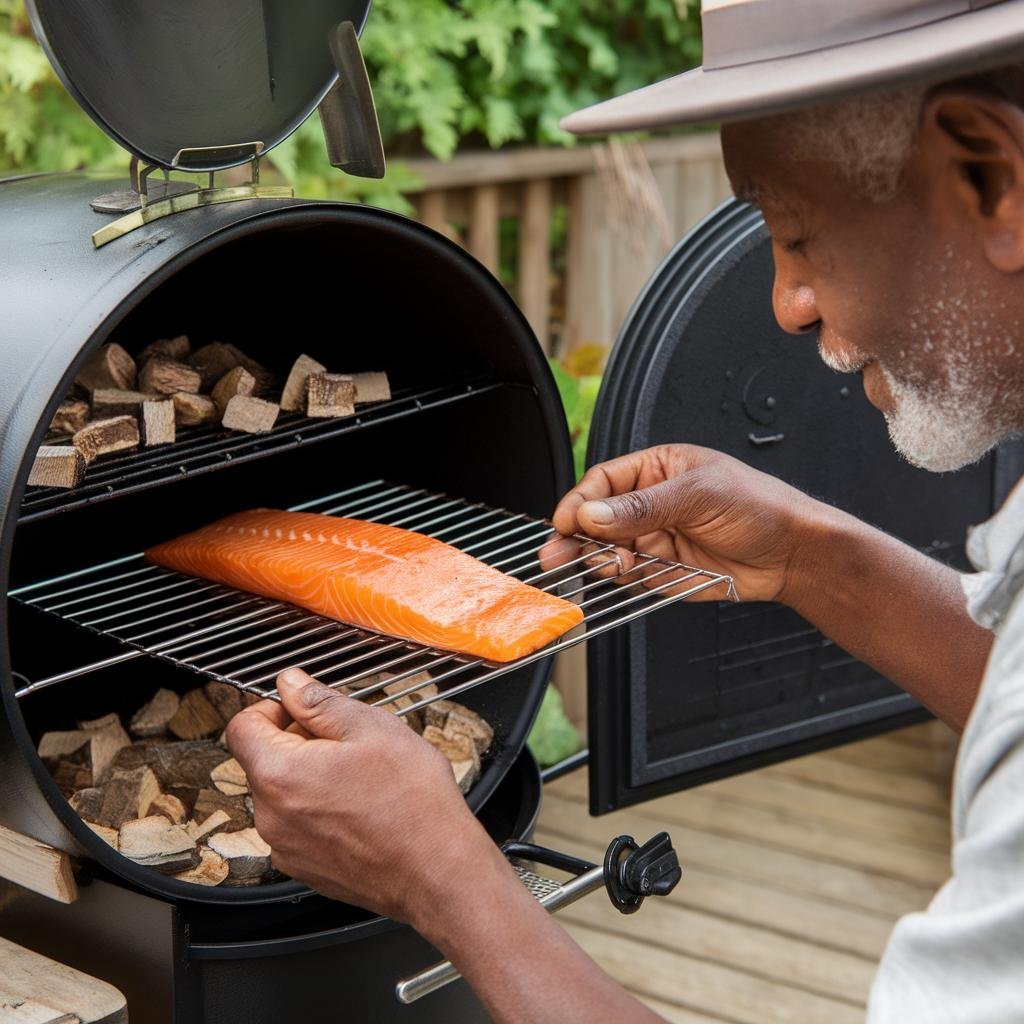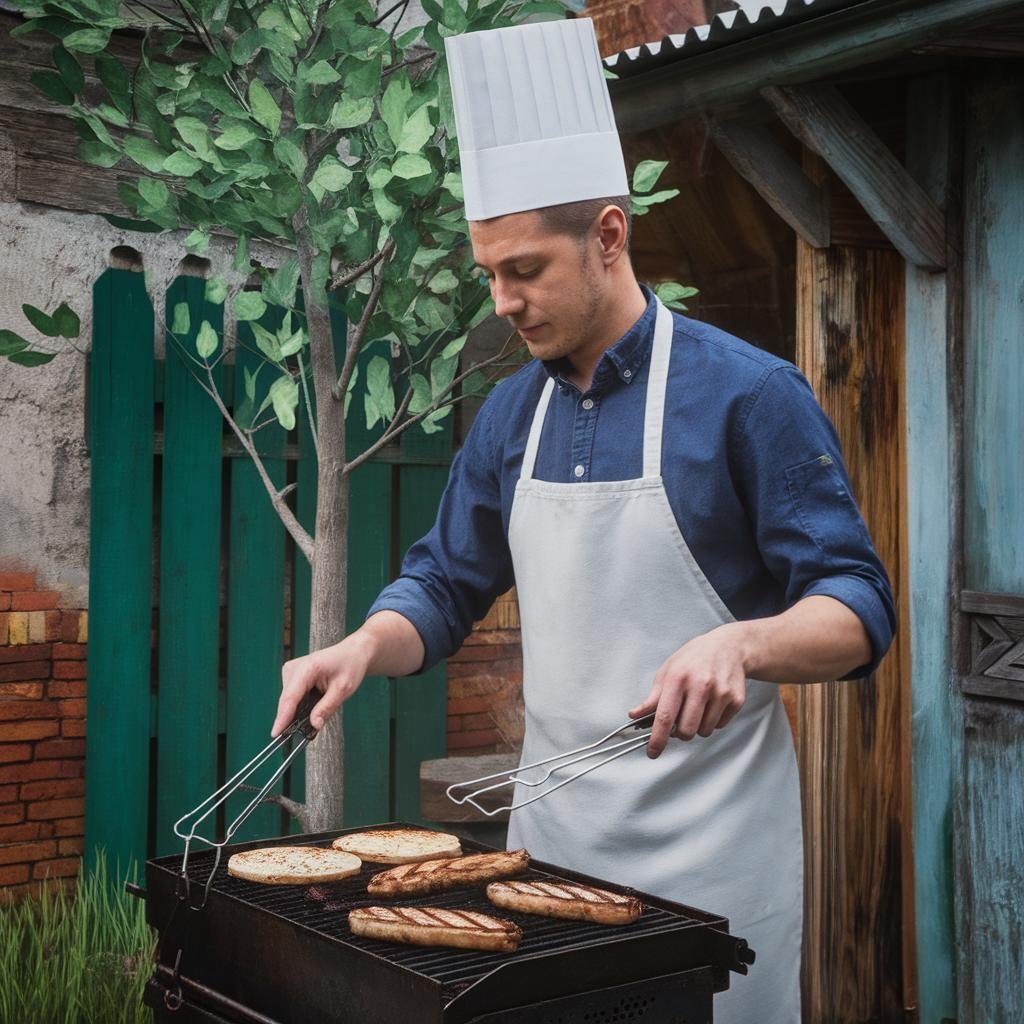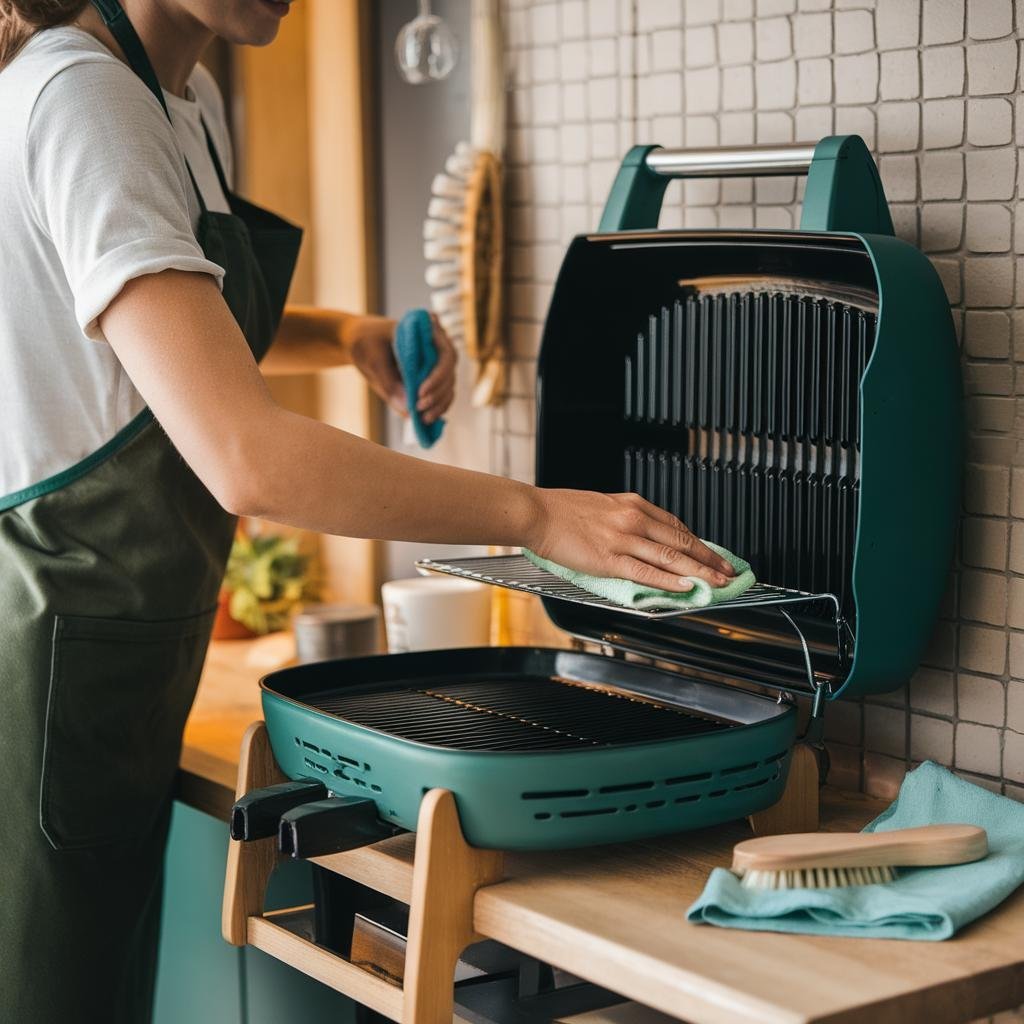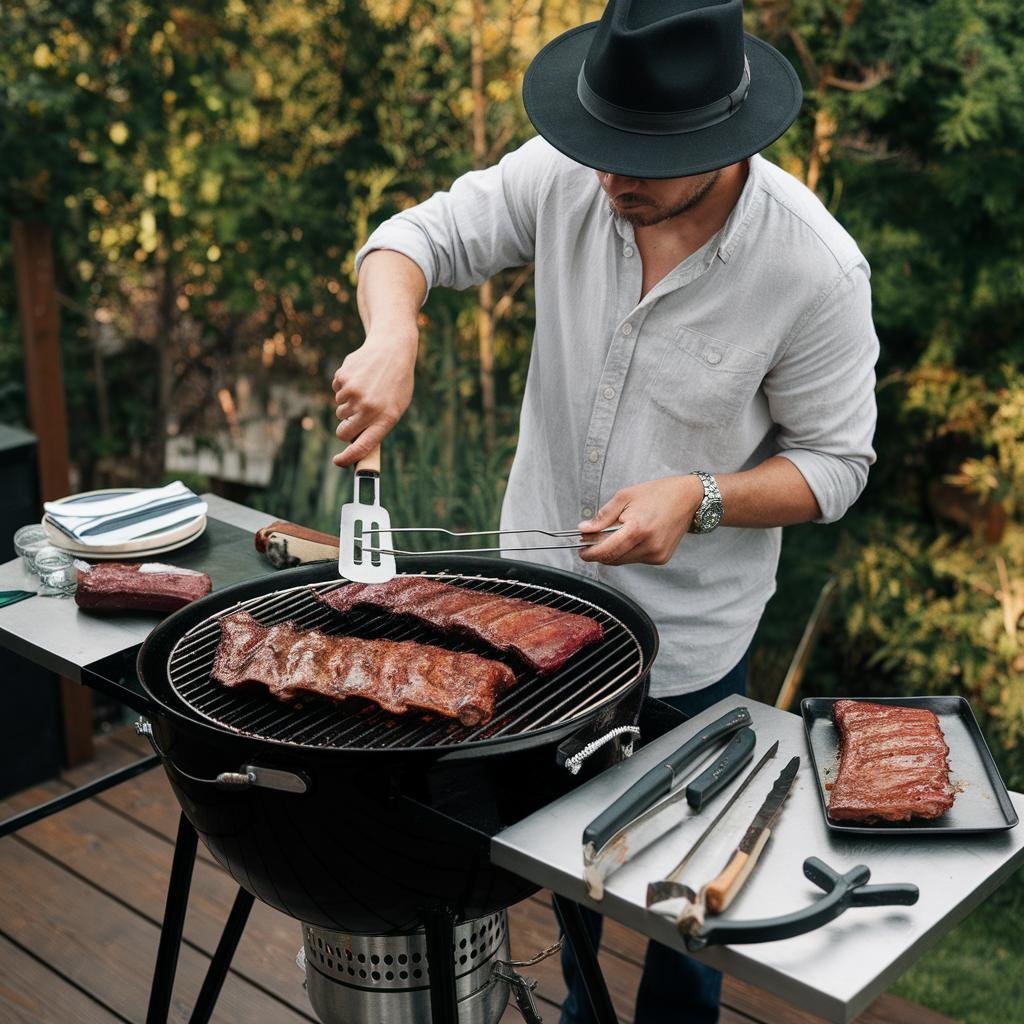Disclosure: This Post Contains Affiliate Links; We earn a commission on purchases.
Grilling is a beloved pastime for many, and understanding the different grilling methods is essential for achieving the best results. Whether you’re a seasoned grill master or just starting out, knowing when to use direct or indirect grilling can make all the difference in creating delicious barbecue dishes.
Direct grilling involves cooking food directly over the heat source, while indirect grilling involves cooking food adjacent to the heat source. The choice of method depends on the type of food and the desired cooking outcome. Let’s dive deeper into each technique and discover when to use them.
Key Takeaways:
- Direct grilling is perfect for quick-cooking foods like hot dogs, kebabs, vegetables, shrimp, burgers, and thin cuts of poultry, pork, or steak.
- Indirect grilling is ideal for larger or tougher foods that require longer cooking times, such as ribs, brisket, whole chickens or turkeys, and smoking foods like fish fillets.
- Combo cooking, which combines direct and indirect heat, is great for thicker cuts of meat and allows for a perfect balance of searing and cooking.
- Setting up your grill for two-zone heat provides better control over cooking temperatures and allows for simultaneous cooking of different types of food.
- Follow grilling tips such as preheating the grill, cleaning the grates, using a meat thermometer, letting cooked food rest, and practicing grilling safety.
Direct Grilling: Quick and High Heat
Direct grilling is a popular method that allows you to cook your favorite foods quickly and achieve that delectable charred flavor. It’s perfect for a wide range of ingredients, including hot dogs, kebabs, vegetables, shrimp, burgers, and thin cuts of poultry, pork, or steak.
When direct grilling, it’s important to preheat your grill to the right temperature. The ideal range is between 450°F to 650°F, depending on the recipe and the thickness of the food. This high heat helps sear the surface, creating a delicious crust while locking in the juices.
To begin, place the food directly over the heat source on the grill grates. This could be the burners in a gas grill or the charcoal in a charcoal grill. Make sure the food is evenly spaced and not overcrowded.
Cook the food until it reaches the desired internal temperature. This can vary depending on the type of meat or the doneness level you prefer. Use a meat thermometer to ensure accuracy and avoid undercooking or overcooking.
While grilling, it’s essential to flip the food halfway through the cooking process. This helps to ensure even cooking and prevents the food from sticking to the grill grates. Use long-handled grilling tongs or spatulas to turn the food without piercing or losing those flavorful juices.
And now, let’s take a moment to appreciate how direct grilling can elevate your grilling game. Check out this mouthwatering image of perfectly grilled steak:
Direct grilling is the go-to method for quick-cooking foods. The high heat produces a beautiful sear and delicious flavor, making every bite a delight.
So, fire up your grill, gather your favorite ingredients, and get ready to enjoy the mouthwatering results of direct grilling!
Indirect Grilling: Low and Slow Cooking
Indirect grilling is a cooking method that is best suited for larger or tougher foods that require longer cooking times. It is the perfect technique for achieving tender, juicy results with ribs, brisket, whole chickens or turkeys, and even smoking fish fillets. By utilizing indirect heat, you create a lower, more even cooking temperature, similar to an oven, allowing the food to cook slowly and evenly.
To cook using indirect heat, set up a two-zone or three-zone cooking method on your grill. In a two-zone setup, you have one side of the grill with direct heat and the other side with indirect heat. This allows you to sear the food quickly over the direct heat and then move it to the indirect heat to finish cooking without the risk of burning or charring. Alternatively, you can use the “ring of fire” method for charcoal grilling, where the charcoal is arranged in a circle around the edges of the grill, leaving the center as the indirect heat zone.
Grill Zones
Understanding grill zones is essential for successful indirect grilling. It involves creating two or more distinct heat zones on your grill. The heat source is concentrated in one zone, typically the side with direct heat, while the food is placed in the other zone, the indirect heat zone. This setup allows you to control the cooking process and ensure that larger cuts of meat are properly cooked through without burning the exterior. The lid of the grill is usually closed during indirect grilling to create an oven-like environment and maintain a consistent temperature.
If you’re using a gas grill, you can achieve a two-zone setup by turning on only half of the burners. For a charcoal grill, you can arrange the hot charcoal on one side and leave the other side empty for indirect cooking. This setup gives you the flexibility to cook different types of food simultaneously and provides you with a range of heat options.
When indirect grilling, it’s important to keep the lid closed as much as possible to maintain a consistent temperature. This slow cooking method allows the meat to become tender and juicy, resulting in a delicious flavor that is impossible to achieve with direct grilling alone.
Indirect Grilling Tips
Follow these grilling tips to get the most out of your indirect grilling experience:
- Preheat your grill before cooking to ensure that it reaches the desired temperature.
- Use a meat thermometer to monitor the internal temperature of larger cuts of meat to ensure they are cooked through.
- Consider adding wood chips or chunks to the grill for additional flavor when smoking foods.
- Place a drip pan under the food to catch any drippings and prevent flare-ups.
- Avoid lifting the grill lid too often to maintain a consistent temperature.
- Plan for longer cooking times when using indirect heat to ensure the food is thoroughly cooked.
By mastering the art of indirect grilling and utilizing grill zones effectively, you can create mouthwatering, tender dishes that will impress your friends and family.
Combo Cooking: Best of Both Worlds
Combo cooking is a versatile grilling technique that combines the benefits of direct and indirect heat to create flavorful dishes with perfect texture. This method is especially effective when cooking thicker cuts of meat, like a juicy ribeye steak. By starting the cooking process over direct heat to sear the meat and create those coveted grill marks, and then finishing it off over indirect heat, you can achieve a mouthwatering result that is both tender and infused with rich smoky flavors.
Combo cooking allows you to take advantage of the quick searing capabilities of direct heat while also enjoying the gentle, slow cooking of indirect heat. This technique is not limited to meat alone; it can be applied to various ingredients, such as chicken breasts, fruits, and dense vegetables. The possibilities are endless when it comes to exploring the world of combo cooking.
The Combo Cooking Process
Here’s an overview of how to execute combo cooking:
- Preheat your grill to a medium-high temperature, around 400°F to 450°F.
- Place your seasoned meat directly over the heat source and sear it for a few minutes on each side.
- Once the desired grill marks have formed, move the meat to the indirect heat zone of the grill.
- Cook the meat slowly and indirectly until it reaches the desired internal temperature.
By following this process, you’ll be able to achieve the perfect balance of caramelization and tenderness in your grilled dishes.
Benefits of Combo Cooking
Combo cooking offers several advantages that make it a popular grilling technique:
- Enhanced flavor: By searing the meat first, you create a savory crust that locks in juices, resulting in a succulent and flavorful end product.
- Juicy texture: The slow cooking over indirect heat allows the meat to cook evenly without drying out, resulting in mouthwateringly tender bites.
- Versatility: Combo cooking can be applied to a wide range of ingredients, from beef and poultry to seafood and vegetables, allowing for endless creativity and variety in your grilling repertoire.
Now that you understand the basics of combo cooking, it’s time to take your grilling skills to the next level by experimenting with this dynamic and delicious technique.
Setting Up Your Grill for Two Zone Heat
When it comes to grilling, achieving the perfect temperature for your food is crucial. That’s where two-zone cooking comes in. By setting up your grill with two distinct heat zones, you can have better control over the cooking process, ensuring that your food is cooked to perfection every time.
To create a two-zone heat on your grill, you need to divide your grill into two areas: one with direct heat and the other with indirect heat. This allows you to cook different types of food simultaneously, giving you the flexibility to grill a variety of dishes for your family and friends.
For charcoal grills, you can achieve two-zone cooking by lighting only one side of the grill with charcoal, while leaving the other side free of direct heat. This creates a hot zone and a cooler zone on your grill. You can adjust the temperature in each zone by adding or removing charcoal.
Gas grills make it even easier to set up two-zone cooking. Simply turn on only half of the burners, leaving the other half off. The burners that are on will provide the direct heat, while the burners that are off will create the indirect heat zone.
By having two distinct heat zones on your grill, you can prevent overcooking or burning your food. For foods that require quick, high-heat cooking, such as steaks or burgers, you can start them in the direct heat zone to sear them and create those beautiful grill marks. Then, move them to the indirect heat zone to finish cooking them to the desired doneness without drying them out. This technique ensures that your food is cooked evenly and retains its natural juices for maximum flavor.
Two-zone cooking is not only limited to meats. You can also use this technique for grilling vegetables, fish, or even desserts! The possibilities are endless.
Tips for Grilling Success
To ensure success with your grilling, follow these best practices for grilling and grilling safety tips:
- Preheat your grill: Before cooking, make sure to preheat your grill. This step ensures proper heat distribution and helps to create those beautiful grill marks.
- Clean the grill grates: To prevent sticking and flare-ups, keep your grill grates clean. Regular cleaning will also help to maintain the flavor of your food.
- Use a meat thermometer: Don’t rely on guesswork when it comes to determining the doneness of your food. Use a meat thermometer to check the internal temperature and ensure that your food is cooked to perfection.
- Let the cooked food rest: After grilling, it’s important to let your food rest before serving. This allows the juices to redistribute, resulting in a more flavorful and tender dish.
- Practice grilling safety: Safety should always be a top priority when grilling. Use long-handled tools to keep a safe distance from the heat, and never leave your grill unattended. Keep children and pets away from the grill area, and have a fire extinguisher nearby, just in case.
By following these grilling tips and best practices for grilling, you’ll be well on your way to becoming a grill master. So fire up the grill, invite some friends over, and enjoy a delicious outdoor cooking experience!
| Grilling Tips | Best Practices for Grilling | Grilling Safety Tips |
|---|---|---|
| Preheat your grill | Clean the grill grates | Use long-handled tools |
| Use a meat thermometer | Let the cooked food rest | Keep children and pets away |
Conclusion
Mastering both direct and indirect grilling techniques is key to becoming a skilled backyard griller. By understanding when and how to use each method, you can create a variety of mouthwatering meals that will impress your family and friends. Whether you’re craving quick and high heat or low and slow cooking, knowing the difference between direct and indirect grilling will ensure the best results.
Direct grilling is perfect for fast-cooking foods like burgers, hot dogs, and kebabs. It allows you to achieve that perfect sear and char on the outside while ensuring juicy, flavorful interiors. On the other hand, indirect grilling is ideal for larger cuts of meat, such as ribs and brisket, as well as smoking fish fillets. This method provides a slow, even cooking process that results in tender, succulent dishes.
Don’t be afraid to experiment with different recipes and ingredients. Combo cooking, which combines both direct and indirect heat, can give you the best of both worlds. It’s a great technique for thicker cuts of meat like ribeye steak, allowing you to achieve a flavorful sear and retain moisture during the cooking process.
So go ahead and fire up your grill, armed with the knowledge of direct and indirect grilling methods. Discover the joy of creating delicious meals while enjoying the art of grilling. With practice and these techniques under your belt, you’ll be a grilling expert in no time!
References

Ryan Conlon is a BBQ enthusiast and inspired chef on a journey through the smoky, savory world of outdoor cooking. Hailing from the heart of the Midwest, Ryan’s passion for grilling ignited during his early years, where family gatherings often revolved around the sizzle of the grill and the aroma of seasoned meats.







